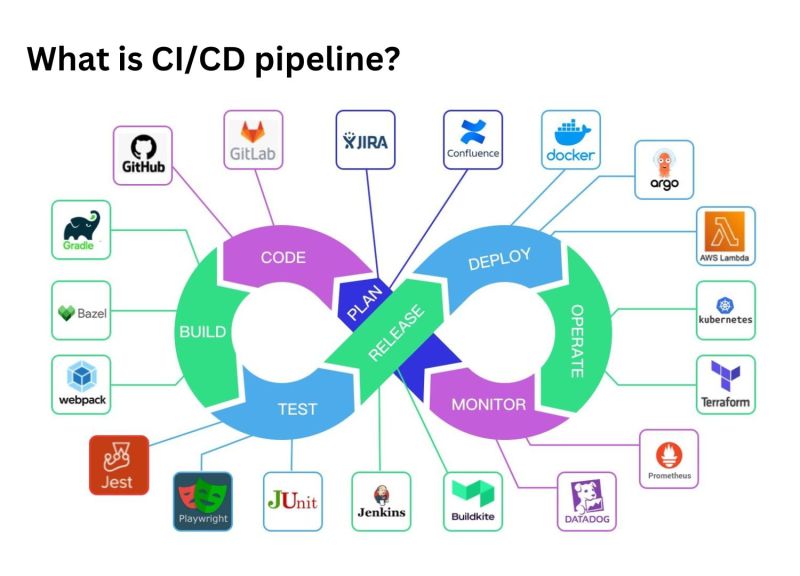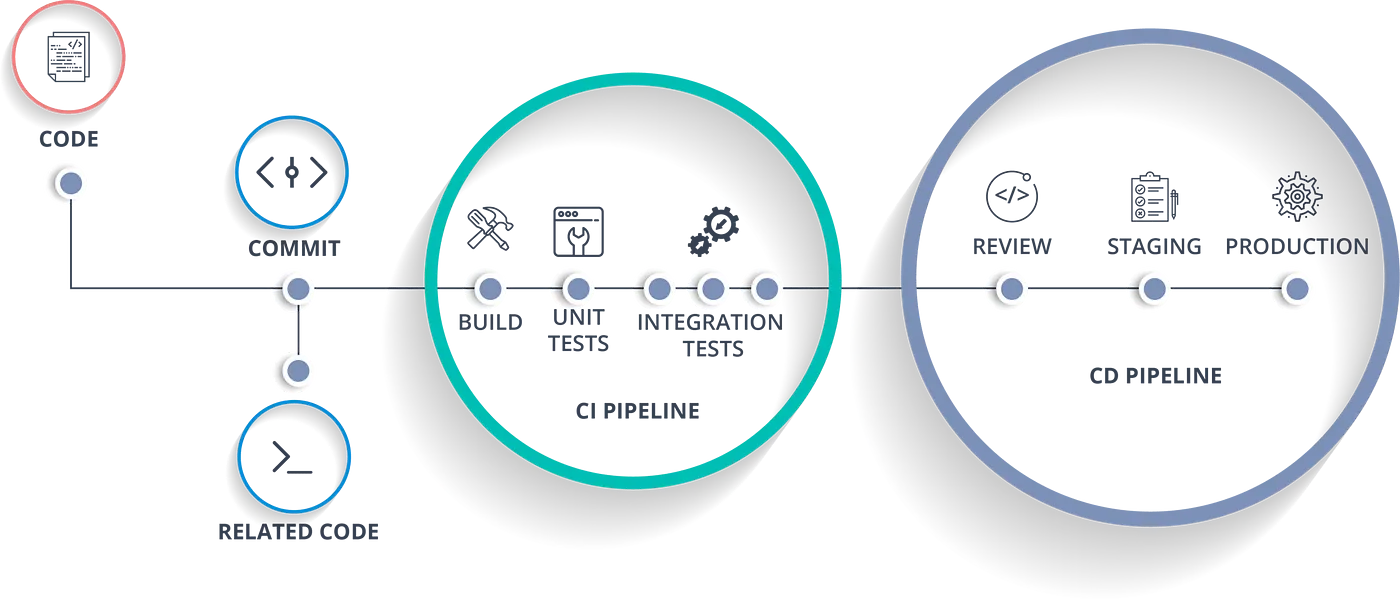CI/CD Workflow

Continuous Integration (CI)
Continuous integration (CI) is the process that ensures the stability of all the available developer source code. All working copies of source code are merged into the trunk/main line (instead of a main branch, this can be a code branch for a given iteration/sprint) and integrated with each other. The primary objective of maintaining a stable code base is achieved through automated builds of each code submitted and the execution of the unit tests. This is done so that defects can be found and addressed quickly. This feature is especially powerful when combined with continuous delivery
Improved Code Quality
With CI, developers are required to integrate their code changes into a shared repository multiple times a day. This means that issues are caught early on in the development cycle, before they can become larger problems. By detecting issues early, developers can quickly fix problems and prevent them from being propagated to other parts of the codebase. This results in improved code quality, as issues are detected and resolved before they can become larger problems.
Reduced Risk of Bugs
CI ensures that automated tests are run every time a change is made to the codebase. This means that any issues or bugs are immediately detected, and developers can quickly address them. By running automated tests continuously, CI reduces the risk of bugs being introduced into the codebase. This is especially important for large codebases, where it can be difficult to manually test every aspect of the code.
Increased Visibility into the Development Process
CI provides increased visibility into the development process, allowing developers to see the impact of their changes on the codebase. This visibility is important for ensuring that everyone is working towards the same goal, and that changes are being made in a way that aligns with the overall project objectives. Additionally, CI provides a platform for collaboration, as developers are required to integrate their code changes into a shared repository multiple times a day.

Continuous Delivery (CD)
Development teams produce software in short cycles using modern-day software development approaches. One of the biggest challenges is ensuring the reliability of any software releases to the target environments at any given time. A straightforward and reusable deployment process is essential in order to reduce the cost, time, and risk of delivering software changes. These could be incremental updates to the application in production. In a nutshell, CD delivers software changes more frequently and reliably, compared to manual deployment and testing and DevOps can be considered a product of continuous delivery.
Benefits of Continuous Delivery
Continuous Delivery has many benefits, both for development teams and their stakeholders. By releasing software in smaller, more frequent increments, teams can reduce the risk of bugs and other issues, as well as provide faster feedback to stakeholders. In addition, CD enables teams to rapidly respond to changing requirements and customer feedback, leading to more satisfied customers and higher retention rates. Finally, CD can help teams reduce costs by catching issues early in the development process and avoiding the need for costly and time-consuming rework.
How Continuous Delivery Works
Continuous Delivery is achieved through a combination of automated testing, continuous integration, and continuous deployment. First, developers write code and commit it to a shared repository. Automated testing tools then run a battery of tests to ensure that the code is functioning as expected and that it meets specific quality standards. If the code passes all of the tests, it is automatically deployed to a staging environment for further testing and review. Once the code has been thoroughly tested and reviewed, it can be pushed to production with minimal risk of issues or downtime.
Challenges of Continuous Delivery
While Continuous Delivery offers many benefits, it also presents some challenges that teams must be prepared to address. For example, implementing CD requires a significant investment in automation tools and infrastructure, which can be expensive and time-consuming. In addition, CD requires a cultural shift towards collaboration and transparency, which can be difficult for some teams to achieve. Finally, CD requires a rigorous approach to testing and quality assurance, which can be challenging for teams without the necessary skills or resources.
Continuous Deployment (CD)
Continuous delivery ensures every change can be deployed to production while having the option to hold the production deployment until a manual approval is given. On the other hand, continuous deployment lets every change to be automatically deployed to production. To implement continuous deployment, one must have continuous delivery in place, since continuous deployment is created by automating the approval steps of continuous delivery.
Benefits of Continuous Deployment
Continuous Deployment has several benefits that make it a valuable approach to software engineering. First, it reduces the time taken to deploy code changes to a production environment. With CD, the code is automatically deployed once it passes the tests, eliminating the need for manual deployment. This reduces the time taken to deploy code changes from days or weeks to minutes or hours.
Second, CD improves the quality of the code by ensuring that it is always production-ready. By automating the entire deployment process, CD eliminates human error, which is a common cause of production failures. This ensures that the code is always of high quality and can be released to users without any issues.
Third, CD promotes collaboration between developers, testers, and operations teams. By automating the entire deployment process, CD ensures that all teams are working together towards a common goal. This promotes communication and collaboration, which is essential for the success of any software engineering project.
Best Practices for Continuous Deployment
To achieve the benefits of Continuous Deployment, there are several best practices that software engineering teams should follow. First, they should automate the entire deployment process, from testing to deployment. This ensures that the code is always production-ready and can be released to users at any time.
Second, they should use a version control system, such as Git, to manage code changes. This ensures that code changes are tracked and can be easily reverted in case of any issues.
Third, they should have a robust testing framework that tests the code changes thoroughly before they are released to users. This ensures that the code is of high quality and meets the requirements of the users.